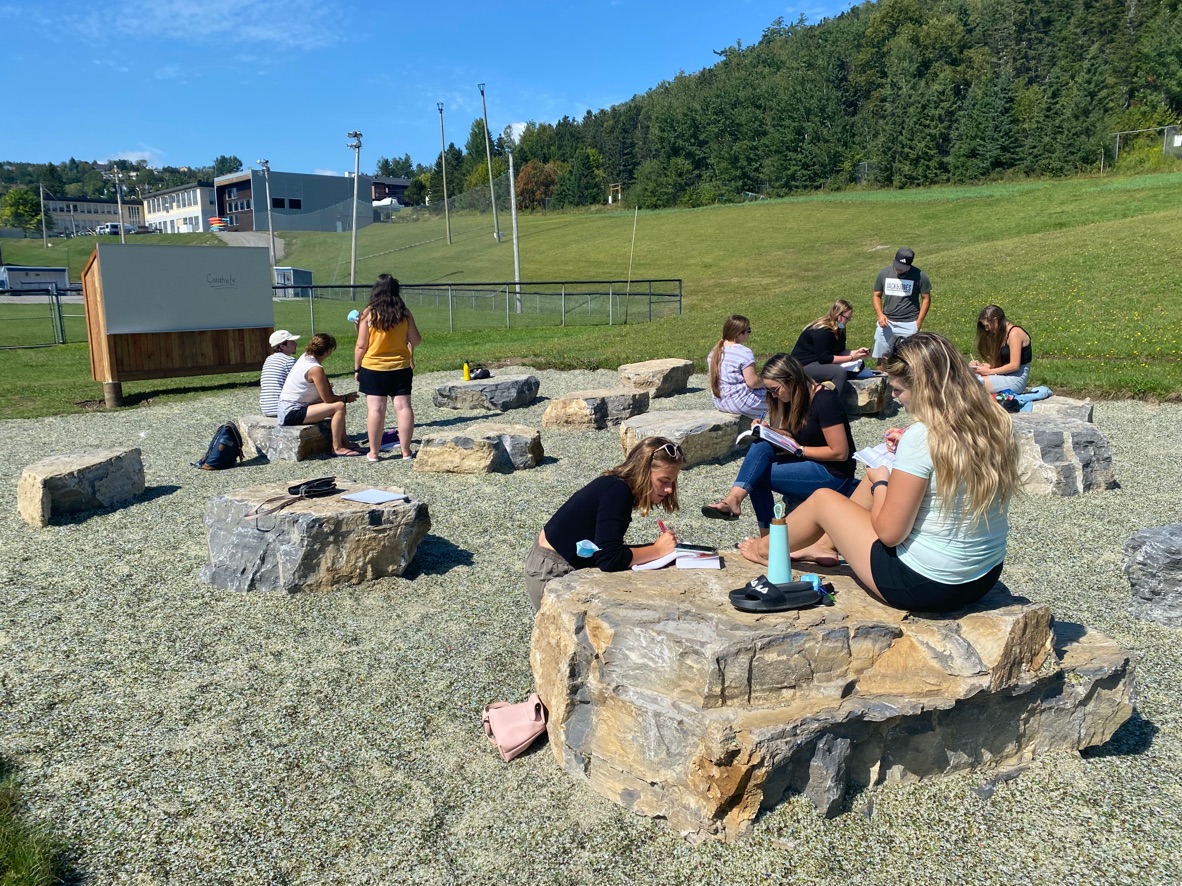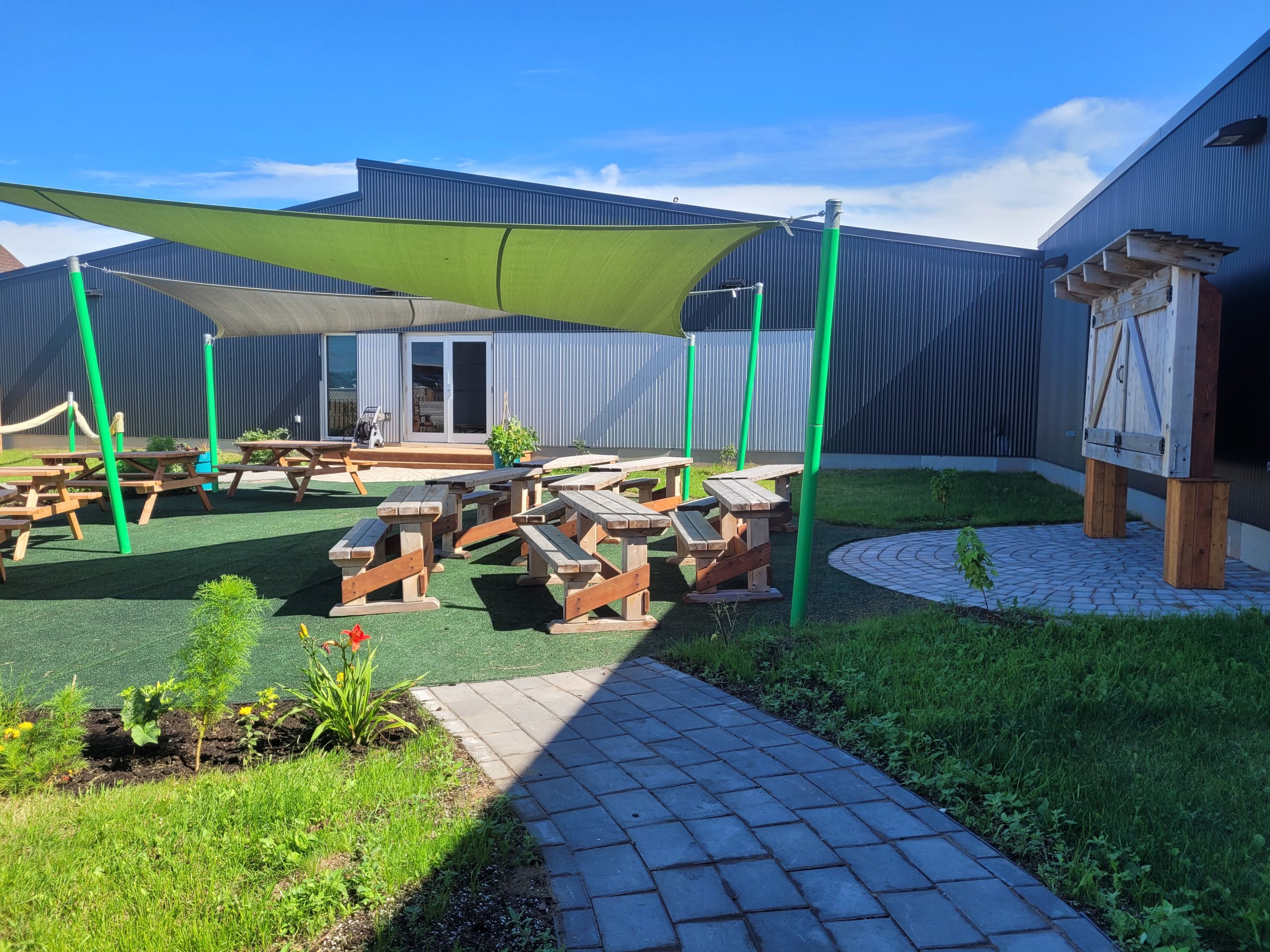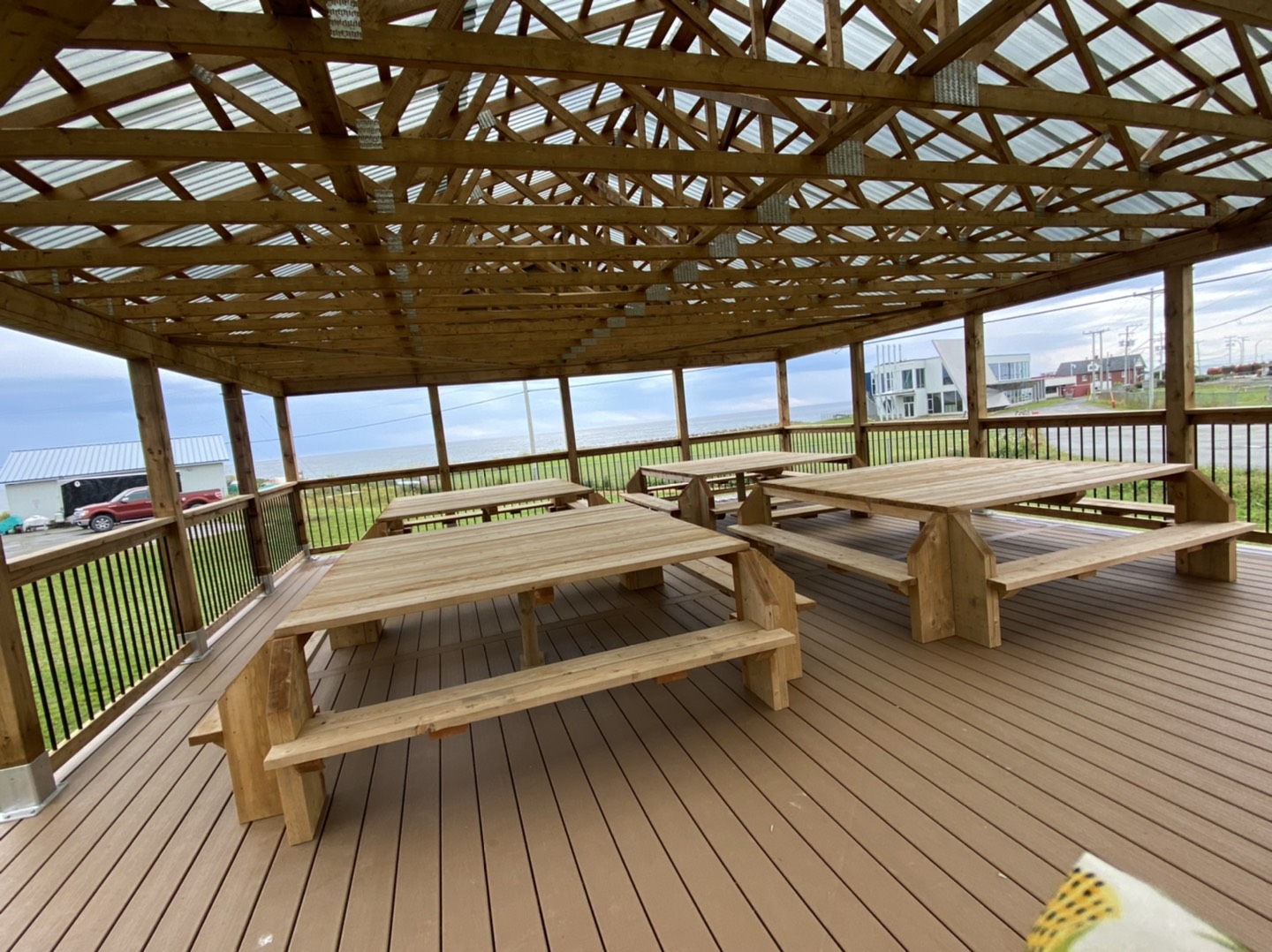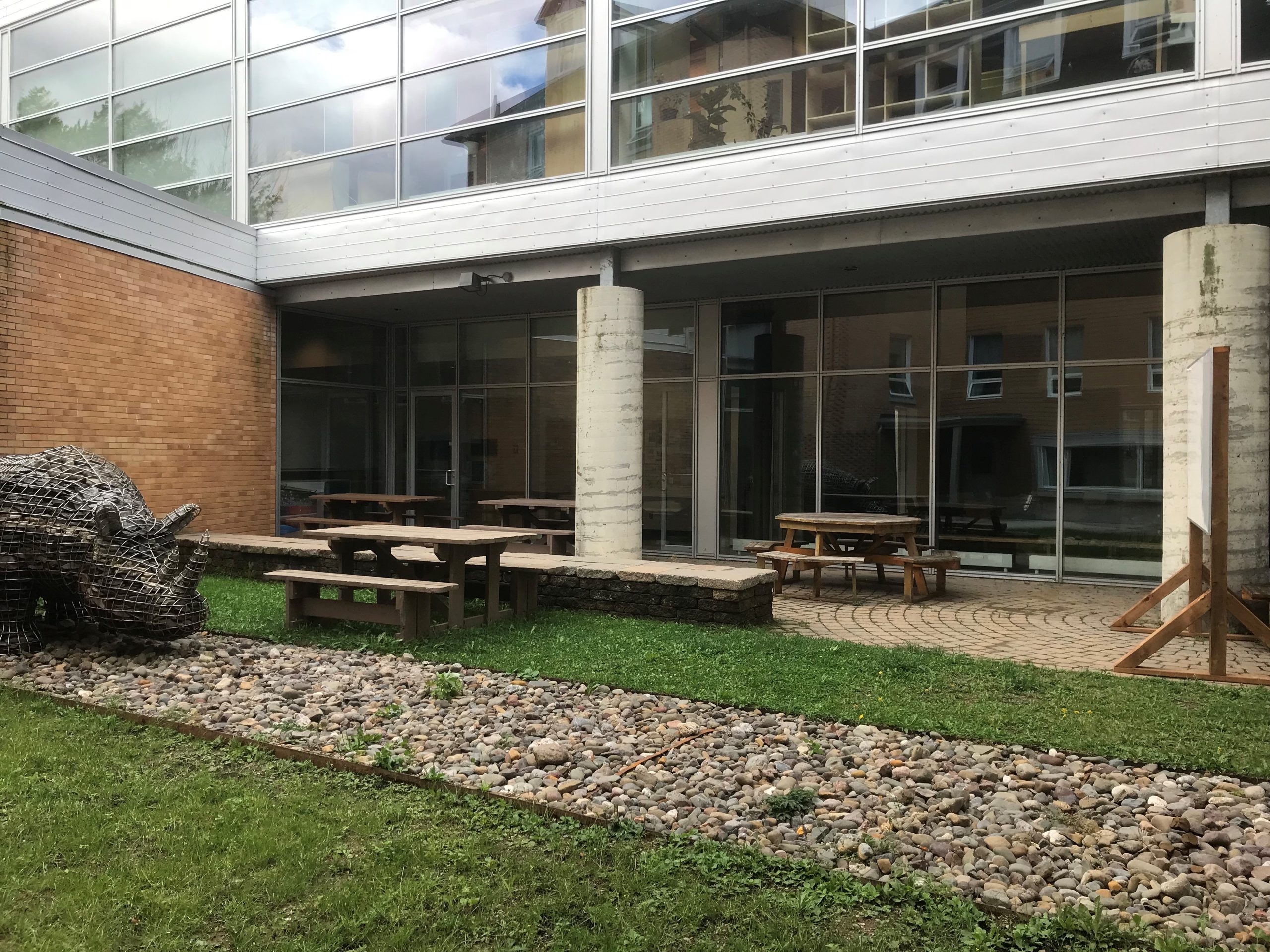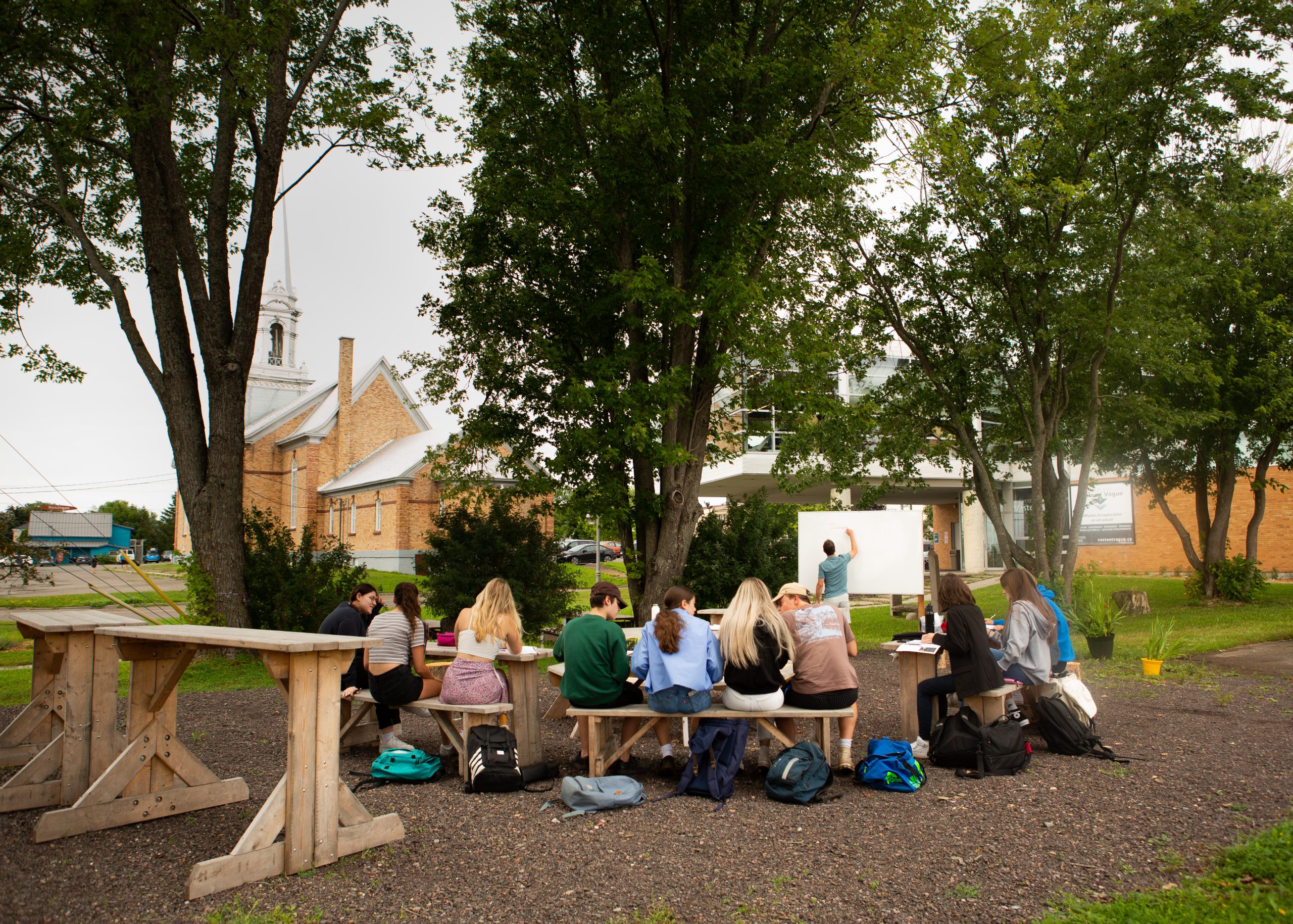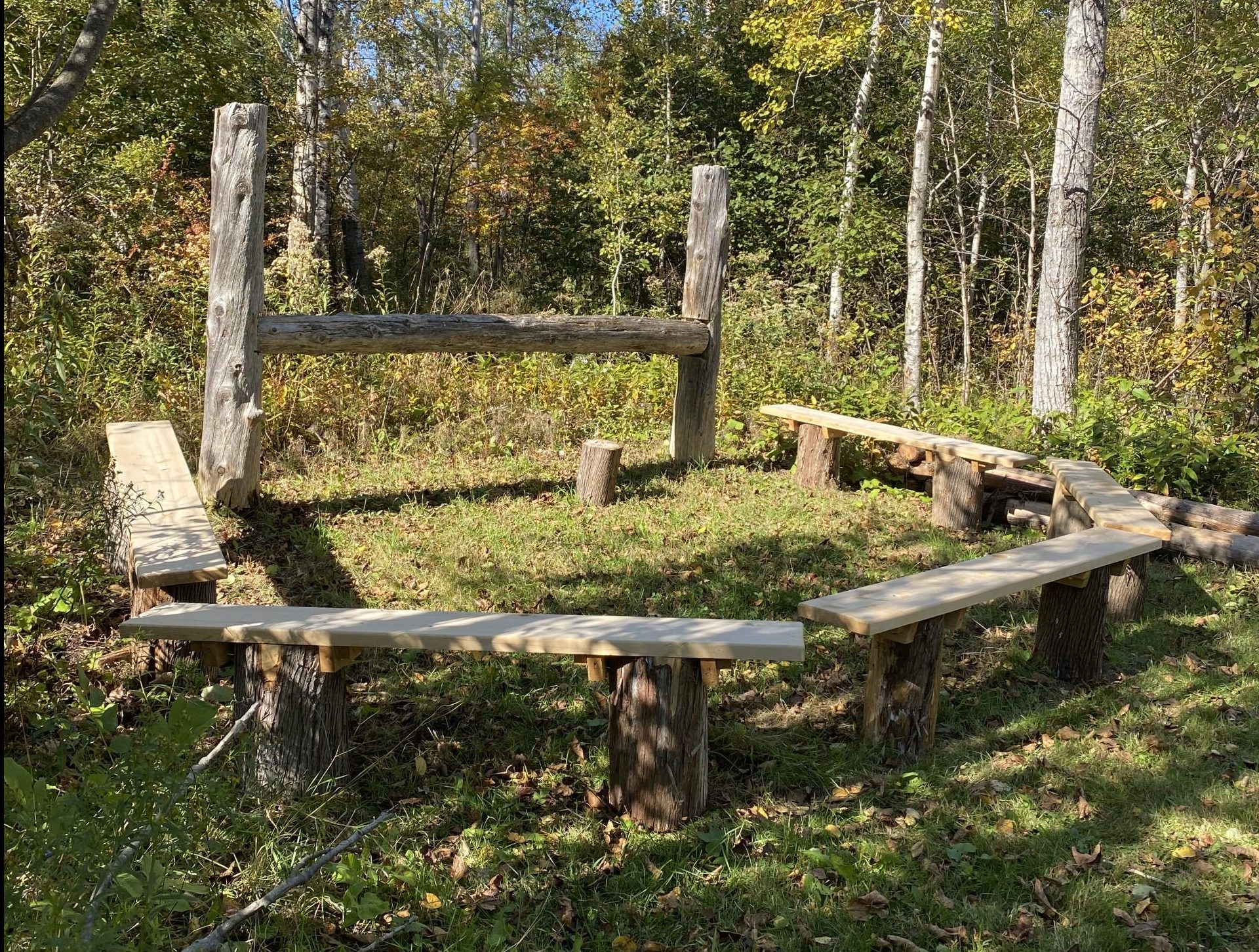An outdoor classroom…Do you really need it?
No need for an outdoor classroom to use outdoor pedagogy! At the Cégep de la Gaspésie et des Îles, Biology and Adventure Tourism teachers, among others, have already been giving outdoor classes for several years.
However, an outdoor classroom definitely makes some outdoor activities more comfortable.
Amanda Emilie gave me the example of a Mathematics teacher who uses on a regular basis the outdoor classroom on her campus for her theory lessons. She could not do it without the whiteboard, and the students find the benches and tables quite useful when it comes to calculating and handling sheets, pencils, and calculators!
On the other hand, she also mentioned another teacher who, one day when all the outdoor classrooms were used by other teachers, simply gave his class in the outdoor space with tables that many used during lunchtime. On the Carleton campus, Teachers can borrow a storage bin containing small portable whiteboards (used, for example, by a team of students taking notes), markers, wipes, and magnets. This is all you need to create a wide range of pedagogical activities without relying on an “official” outdoor classroom! Nevertheless, this bin is often used by teachers going to an “official” outdoor classroom.
Being outdoors “wall-to-wall”?
Amanda Emilie told me about a teacher interested in all the new classrooms at her disposal, but still hesitant to take the leap. Amanda Emilie suggested that she used the classroom to introduce her course plan only, to try it out. In the end, the teacher enjoyed her experience so much that she spent every nice warm day outside! “Try it, you will like it”, as the saying goes! For this teacher, the transition to outdoor pedagogy was relatively simple since she was already focusing on active learning. Some people might need more time to adapt their course.
In any case, we can easily experience outdoor pedagogy with a short activity, without necessarily teaching a whole class, and even less a whole semester.
For instance, even without an outdoor classroom, Steven Parent, an English as a Second Language teacher at the Carleton-sur-Mer campus, was taking his students outside for an activity. He was asking them to go outside and take photos with their cellphone illustrating an action verb. Once back in the classroom, the photos were projected on the screen and students had to describe the action using verbs in the present progressive.
Steven Parent discussed his experience during an interview with Amanda Emilie [in French], recorded as part of the podcast “Pédago grandeur nature” [in French], from the Cégep de la Gaspésie et des Îles.
Interview (in French) of Steven Parent by Amanda Emilie Côte Boudreau
As he explains, his activity is different from what the students might have done in their English class in high school. Previously, Steven Parent would merely use traditional exercises such as fill-in-the-blank texts. He concluded that if a student who had completed many fill-in-the-blank texts to differentiate between simple present and present progressive would still not understand over the years, a different method is more likely to be successful.
The genesis of the outdoor classroom project at the Cégep de la Gaspésie et des Îles
It is in fact Steven Parent who initiated the outdoor classroom project on his campus. He submitted the idea to the college administration, based on a guide published by a team at the Université de Sherbrooke led by Jean-Philippe Ayotte-Beaudet [in French]. The administration was easily convinced. Since her arrival at the college in February 2021, Amanda Emilie had been in charge of the project for all campuses and seized the opportunity.
The outdoor classroom design on the different campuses was conceived by a local committee jointly with Amanda Emilie. This allowed each classroom to match the reality of each campus.
Professional landscape designers were consulted. Indeed, it is better to think about soil drainage before installing outdoor classroom furniture!
Hugo Cavanagh, coordinator of material resources, supervised the construction of the classrooms.
The green committees from each campus were involved in the process to integrate flowers and edible plants into the spaces.
Resources designed at the Cégep de la Gaspésie et des Îles to promote the outdoor classrooms among the teaching staff
In order to promote the outdoor classrooms and encourage teachers to use them, Amanda Emilie first recorded 3 episodes of the podcast “Pédago grandeur nature” with Jean-Philippe Ayotte-Beaudet, editor of the guide on outdoor pedagogy that initially inspired the college project.
Playlist containing 3 episodes from “Pédago grandeur nature” Interview in French with Jean-Philippe Ayotte-Beaudet, professor at the Faculty of Education at the Université de Sherbrooke and recipient of a research chair on outdoor education.
Amanda Emilie also created a Genially presentation, in French, intended for teachers who would like to learn about outdoor pedagogy at their own pace.
Interactive presentation “Ouvrir un feu: un atelier sur les classes extérieures” created by Amanda Emilie Côte Boudreau
One lunchtime, Amanda Emilie organized a virtual meeting, offered to all the college pedagogical staff, conducted by Holly McIntyre. Holly McIntyre is an ex-teacher at the Cégep de la Gaspésie et des Îles (now a teacher in other institutions) who obtained a Master’s Degree in Education on outdoor learning and teacher well-being. Her study confirmed that outdoor learning contributes to fulfillment and engagement for teachers. Outdoor learning also allows teachers to connect with nature, which has a positive impact on their level of happiness and well-being.
In addition, Amanda Emilie organized round-table discussions with teachers who had experienced outdoor pedagogy, to let them share and inspire each other. She then recorded some episodes of the podcast “Pédago grandeur nature” with some participants (such as the interview with Steven Parent mentioned above!).
Playlist containing 3 episodes from “Pédago grandeur nature”. Testimonies (in French) of 3 teachers from Cégep de la Gaspésie et des Îles discussing an activity carried outside as part of one of their respective courses.

